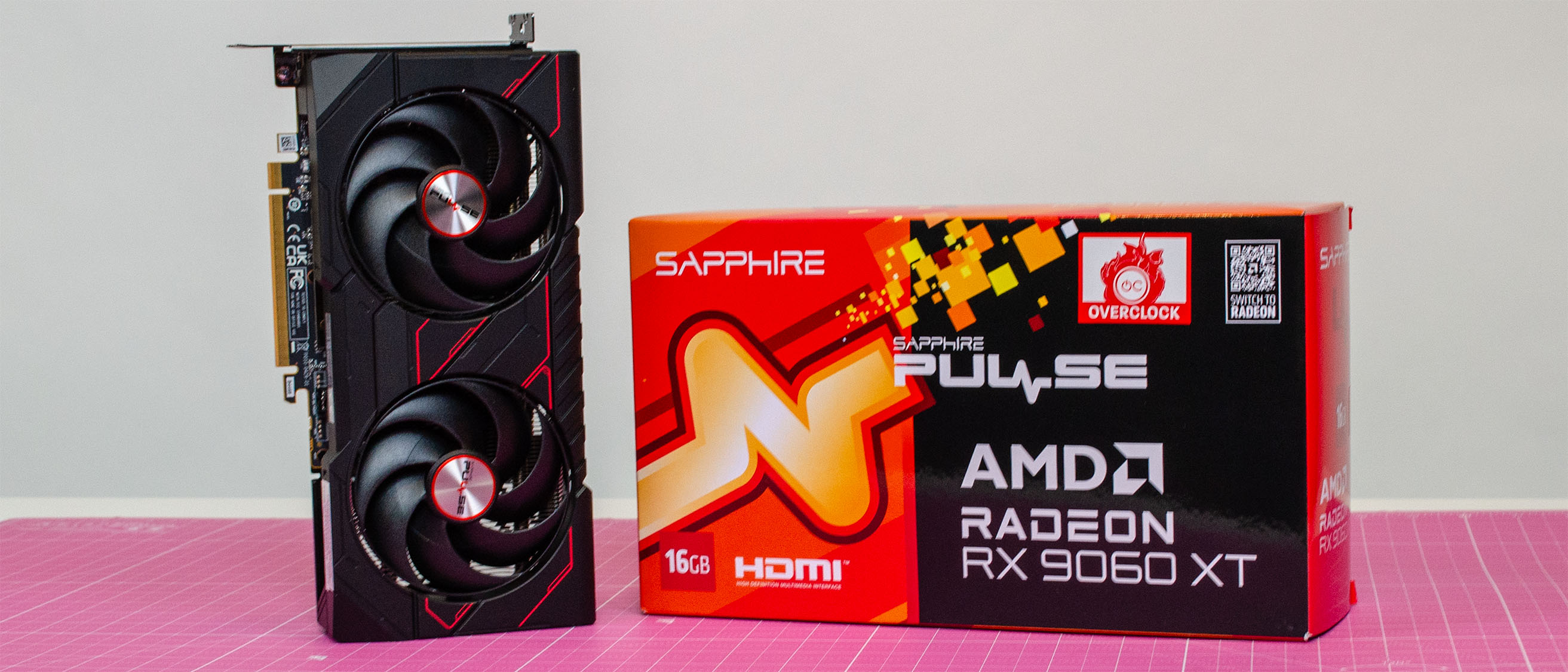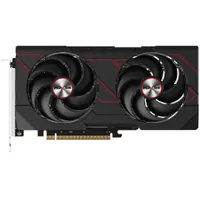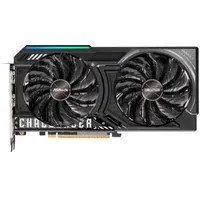TechRadar Verdict
The AMD Radeon RX 9060 XT comes in both 16GB and 8GB versions, and both offer a solid value for gamers on a budget. 3D modeling pros will still want to stick with Nvidia's competing offerings, though, as will those who want the absolute best performance at this price range.
Pros
- +
Both 16GB and 8GB cards offer solid 1440p gaming
- +
AMD continues to close the gap in ray tracing
- +
Affordably priced
Cons
- -
Nvidia still holds the edge on overall gaming performance
- -
Neither are great for professional 3D rendering tasks.
Why you can trust TechRadar
AMD Radeon RX 9060 XT: One-minute review
Having missed the initial AMD Radeon RX 9060 XT review cycle earlier this month for logistical reasons, I wanted to do more with this review than just try to play catch-up with my peers who got to review the 16GB card prior to launch.
Fortunately, doing this post-launch meant that I was able to get my hands on both 16GB and 8GB versions of the RX 9060 XT for a single review, and I'm honestly glad I waited.
Both AMD RX 9060 XT cards bring a compelling value, with the 8GB version starting at $299.99 / £269.99 / AU$569 and the 16GB versions starting at $349.99 / £329.99 / AU$689. This puts it roughly in the middle of the price pack for the best cheap graphics cards of the current generation.

Spec-wise, the only difference between the two cards is really the amount of GDDR6 video memory available, either 16GB or 8GB.
This matters, as that extra 8GB VRAM does improve the performance of the RX 9060 XT (and even makes modest 4K gaming possible), but the difference between the two isn't so large that it overrides any consideration of the additional cost.
However, Nvidia's RTX 5060 Ti 16GB and RTX 5060 (an 8GB card) offer better performance vis-à-vis the RX 9060 XT 16GB and RX 9060 XT 8GB, respectively. In the case of the RTX 5060, there's no difference in price with the RX 9060 XT 8GB, so that is a much tougher call between the two for reasons I'll dig into in a bit.
On the other hand, the RTX 5060 Ti 16GB offers better performance over the RX 9060 XT 16GB, but not so much better that it justifies the much higher price.
Sign up for breaking news, reviews, opinion, top tech deals, and more.
In the end, the AMD Radeon RX 9060 XT 16GB strikes the best balance of price and performance in this class, making it easy to recommend as the best graphics card in this segment for most people, and both are two of the best AMD graphics cards the company's ever put out.
AMD Radeon RX 9060 XT: Price & availability
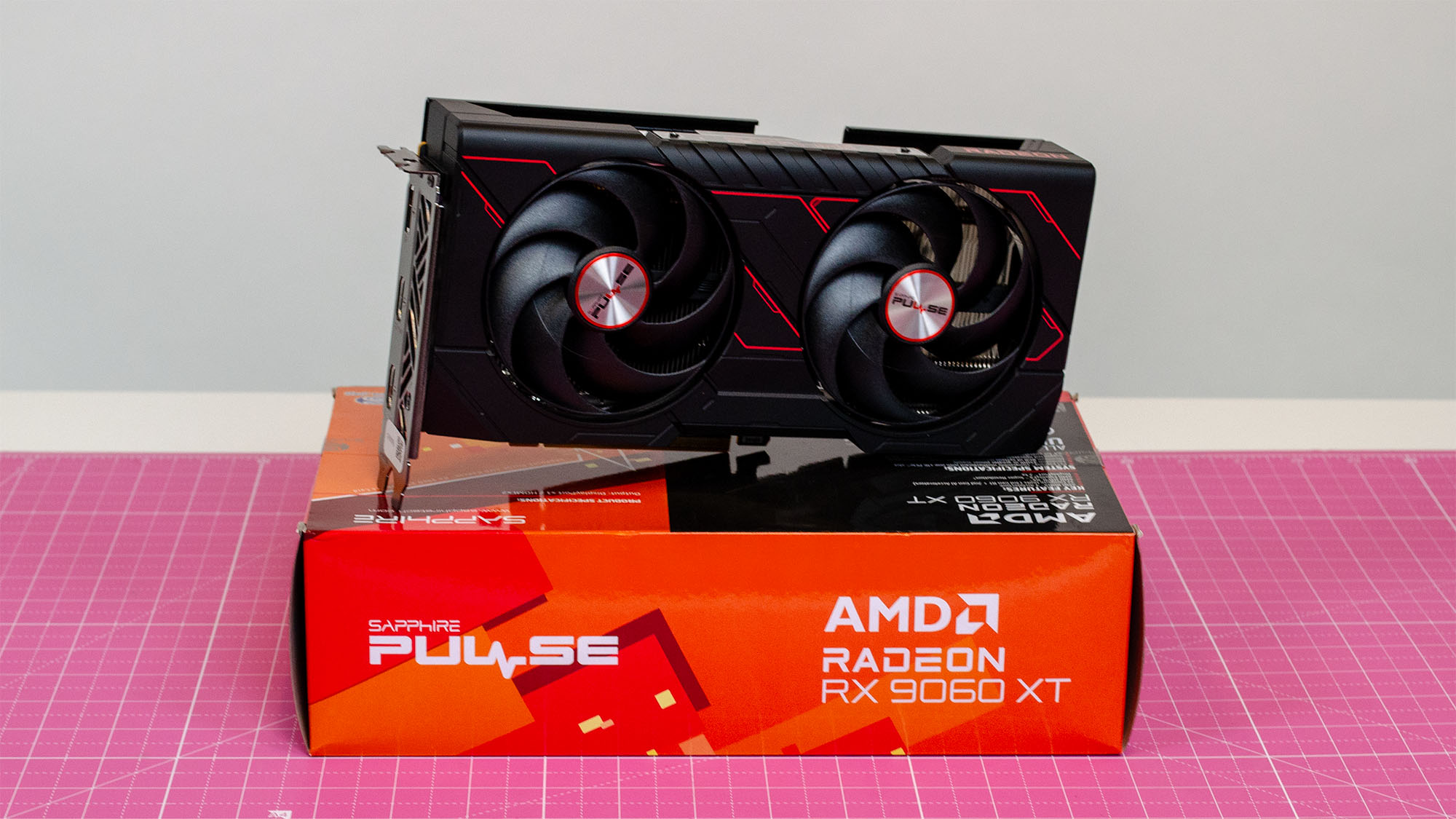
- How much is it? $299.99 / £269.99 / AU$569 for 8GB, $349.99 / £329.99 / AU$689 for 16GB
- When can you get it? Now
- Where is it available? Available in the US, UK, and Australia
The AMD Radeon RX 9060 XT starts at $299.99 / £269.99 / AU$569 for the 8GB version, with the 16GB version starting at $349.99 / £329.99 / AU$689.
There's a much more direct comparison between the AMD Radeon RX 7600 XT 16GB and the RX 9060 XT 16GB, as both are very comparable spec-wise. In that regard, the RX 9060 XT is a slight price increase over the RX 7600 XT (about $20 in the US), but it's not really large enough to ding its score.
The RX 7600 XT and RX 7600 are very similar, but there are differences beyond just their memory pools, so the RX 9060 XT is not quite as comparable to the RX 7600, meaning even though the RX 9060 XT is slightly more expensive (about $30 in the US), it's much more reasonable given the comparably faster clock speeds.
The RX 9060 XT 8GB is one of the cheapest graphics cards on the market right now, and unlike many others out there, it's easy enough to find at its MSRP
The RX 9060 XT 16GB is easily the best graphics card you can get this generation under $400, and with 16GB VRAM, it comes with a solid bit of future-proofing built into it.
Nvidia's competing cards, the RTX 5060 Ti 16GB and RTX 5060, are more expensive ($429 / £419.99 / AU$799 for the RTX 5060 Ti 16GB) or about the same price or slightly more expensive ($299 / £269.99 / AU$599) for the RTX 5060.
Neither RX 9060 XT version has an AMD reference card, so you'll need to buy one from a third-party manufacturer, such as Asus, Gigabyte, or XFX.
The same is true for Nvidia's RTX 5060 Ti and RTX 5060, though, so it's hard to knock the 9060 XT cards too hard for this, especially as we've seen fairly wide availability of MSRP cards for sale online that you can actually buy.
Fortunately, we also haven't seen any real stock shortages of the RX 9060 XT cards, so finding stock at MSRP is fairly easy right now.
- Value: 4.5 / 5
AMD Radeon RX 9060 XT: Specs
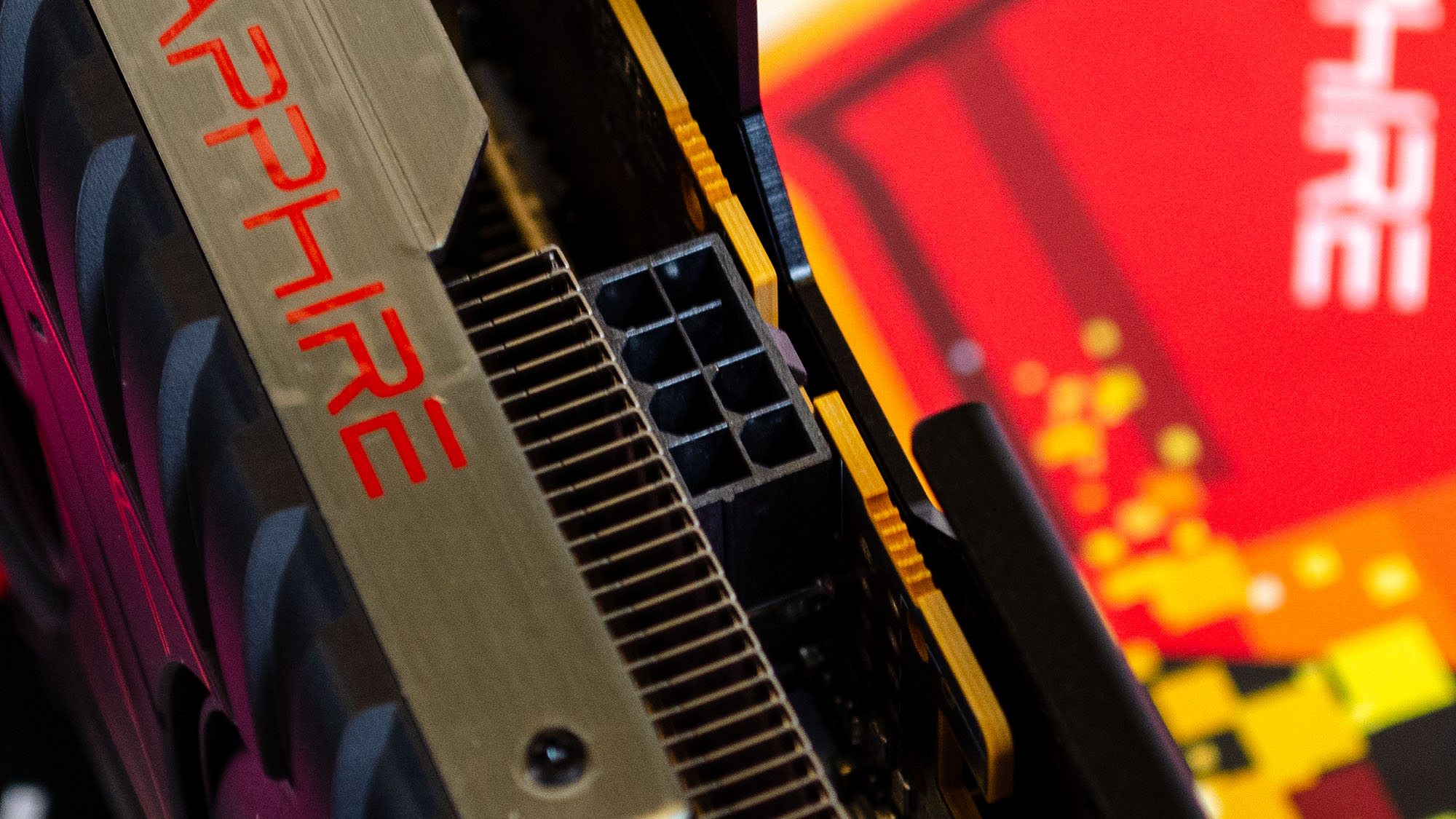
- PCIe 5.0
- 16GB and 8GB VRAM
| Header Cell - Column 0 | RX 9060 XT (16GB) | RX 9060 XT (8GB) |
|---|---|---|
Process Node | TSMC N4P | TSMC N4P |
Transistor Count (Billion) | 29.7 | 29.7 |
Compute Units | 32 | 32 |
Shaders | 2,048 | 2,048 |
Ray Accelerators | 32 | 32 |
AI/Matrix Processors | 64 | 64 |
Render Output Units | 64 | 64 |
Cache (MB) | 32 | 32 |
Base Clock (MHz) | 1,700 | 1,700 |
Boost Clock (MHz) | 3,130 | 3,130 |
Memory Clock (MHz) | 2,518 | 2,518 |
Memory Type | GDDR6 | GDDR6 |
Memory Pool (GB) | 16 | 8 |
Memory Interface (bits) | 128 | 128 |
Effective Memory Speed (Gbps) | 20.1 | 20.1 |
Memory Bandwidth (GB/s) | 322.3 | 322.3 |
PCIe Interface | 5.0 x16 | 5.0 x16 |
TGP (W) | 160 | 150 |
Recommended PSU (W) | 450 | 450 |
Power Connector | 1 x 8-pin | 1 x 8-pin |
Both versions of the AMD Radeon RX 9060 XT have effectively identical specs, other than different memory pools and the slightly higher TDP for the 16GB version to account for powering the additional memory.
Otherwise, they use the exact same GPU die with identical clock speeds, so your decision between the two is really about whether that 8GB of additional GDDR6 VRAM is worth the extra investment.
The number of compute units, ROPs, and available cache on the RX 9060 XT is unchanged over the RX 7600 XT and RX 7600, so the RX 9060 XT is effectively an upgraded version of those cards using the new RDNA 4 architecture and faster game and memory clock speeds.
There's also the issue of whether 8GB is enough for a modern graphics card, even at a sub-$300 price point. Given the performance I found while testing, an 8GB card can perform well right now, even at 1440p, on many games, so long as you don't go anywhere near ray tracing. How much longer will that be the case? It's hard to say, but 8GB cards are already starting to struggle, so even a 10GB card would have been better, much less a 12GB version for the lower-end 9060 XT.
Add to this AMD's maddening decision to stick with a 128-bit memory bus for these cards, which unnecessarily constrains memory bandwidth and inevitably limits the potential performance of the RX 9060 XT. This alone knocks some points off, because if the Intel Arc B570 can use a 160-bit memory bus, there's no reason why AMD or Nvidia continue to do so on their 60-class cards.
That simple widening of the bus could noticeably improve gaming frame rates, and it's something neither AMD nor Nvidia has been able to explain to me beyond vaguely gesturing at cost constraints. If Intel can afford a 160-bit bus, so can AMD, and it makes me wonder how much better these cards might have otherwise been.
OK, end of rant.
- Specs & features: 3.5 / 5
AMD Radeon RX 9060 XT: Design
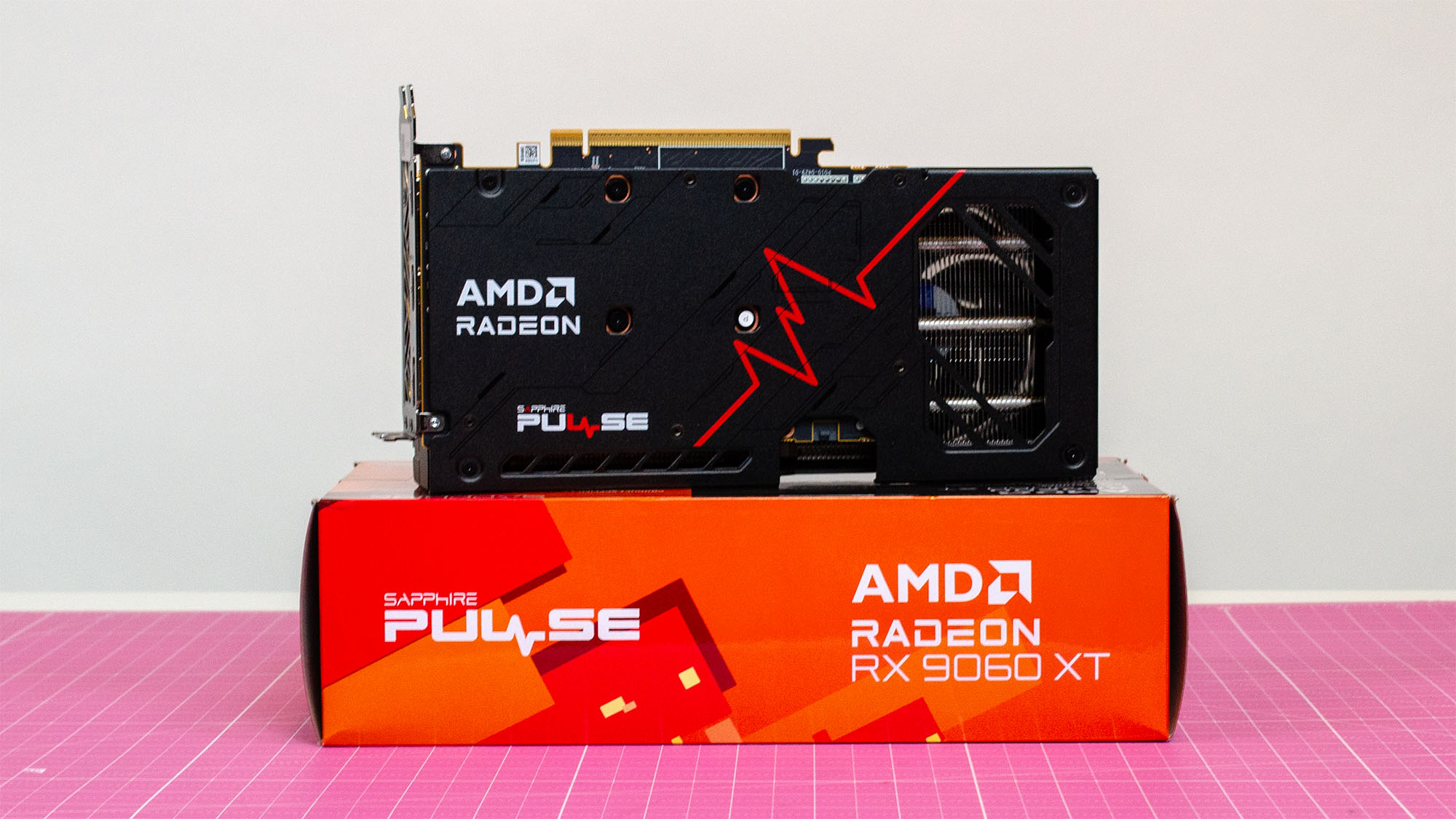
- No AMD reference card
- Good for SFF cases
There is no AMD reference cards for either of the RX 9060 XT versions, so the design of the card you get will depend on the manufacturer.
The two cards I tested, the Sapphire Pulse Radeon RX 9060 XT 16GB and the Asus Dual Radeon RX 9060 XT 8GB, are both fairly slender and compact cards.
Neither have any RGB lighting, so if you're looking for something with more bling, other cards can definitely offer that.
Also, there are some cards from some manufacturers that use triple-fan designs, which seems overkill to me, but if you want a bigger-looking card for a specific build, you'll definitely have that option.
- Design: 3.5 / 5
AMD Radeon RX 9060 XT: Performance
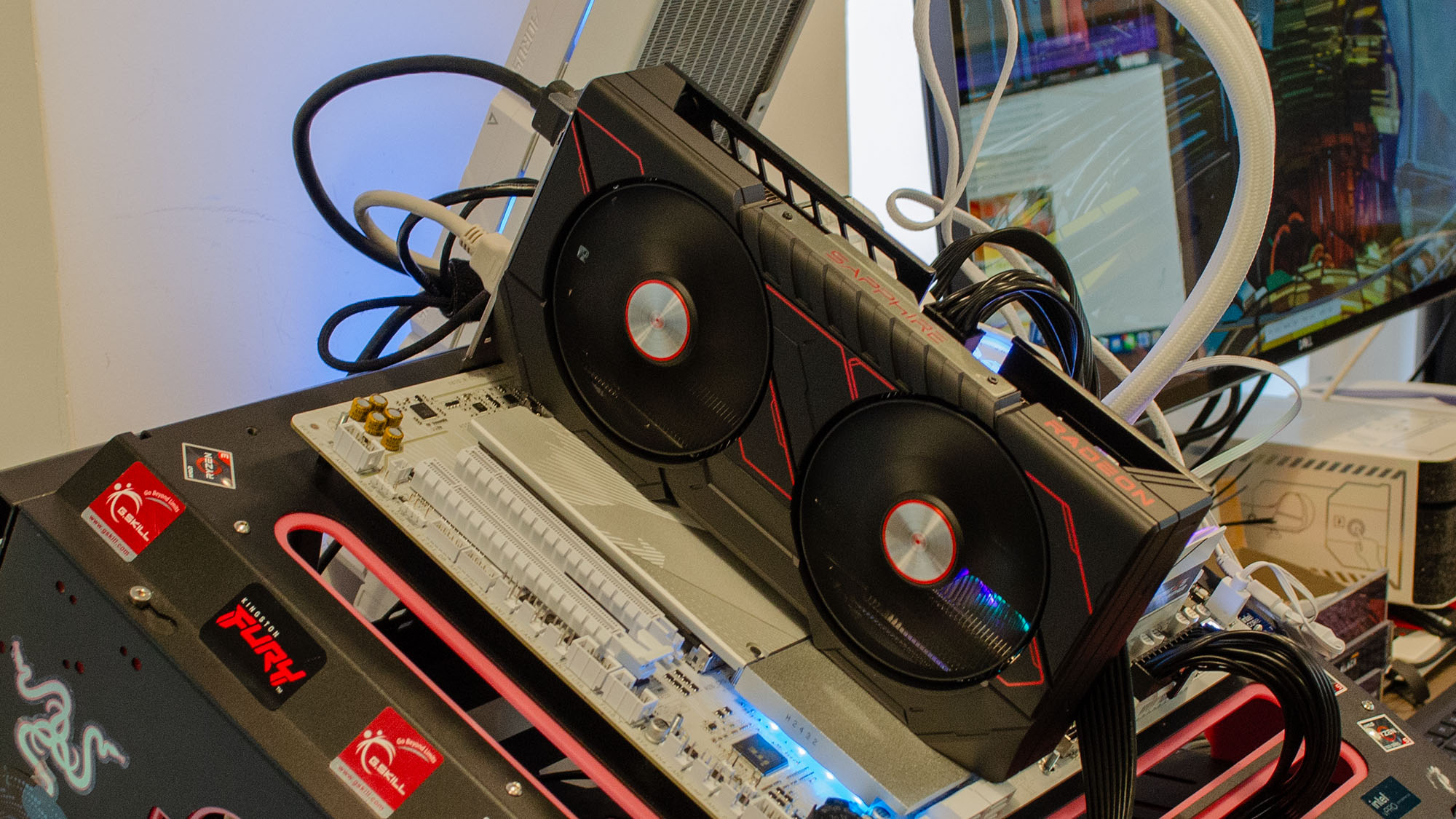
- Big difference between 16GB and 8GB versions
- RTX 5060 Ti 16GB and RTX 5060 offer slightly better performance than the two RX 9060 XT cards
The charts shown below offer the most recent data I have for the cards tested for this review. They may change over time as more card results are added and cards are retested. The 'average of all cards tested' includes cards not shown in these charts for readability purposes.
As far as performance goes, there's a lot to like about both AMD Radeon RX 9060 XT cards, from their modest power draw to their solid 1440p gaming performance.
It's not all positive though, as there are several points where Nvidia's competing cards outperform AMD's latest offerings, making the final assessment much closer than I initially thought it would be when I began testing these cards.
Across synthetic benchmarks, the RX 9060 XT and RTX 5060 Ti are more or less tied across resolutions, with Nvidia's card only edging out AMD's in ray tracing performance. The RX 9060 XT 16GB is only about 15% slower than the RTX 5060 Ti 16GB in synthetic ray tracing performance. While this is expected, it's not as wide as it's been in previous generations.
The RX 9060 XT 8GB, meanwhile, outperforms the RTX 5060 in 1080p (about 4% better), in 1440p (about 10% better), and in 4K (about 10% better), though the RTX 5060 does hold a slight lead in ray-tracing performance (about 3%).
In creative benchmarks, the RX 9060 XT cards are largely competitive against Nvidia's GPUs in everything but 3D model rendering. Unfortunately, I can't say more about this since Blender Benchmark wasn't able to run on either RX 9060 XT card, so I can't say how they'd fare against the Nvidia RTX 5060 Ti 16GB.
The RTX 5060, interestingly enough, couldn't run Blender Benchmark either, so this will have to be an issue I'll investigate further and update my results once I have them, but given that Blender Benchmark Cycles renderer is optimized for Nvidia CUDA (as is nearly all 3D modeling software), I am very confident that the RX 9060 XT cards aren't going to be competitive on this workload, it's really just a matter of how far behind the RX 9060 XT cards land in the end.

Creative workloads aren't what AMD Radeon cards are most known for, though. PC gaming is where these cards really compete, and in this regard, the RX 9060 XT 8GB comes in about 4% slower than the RTX 5060 in 1080p overall, while the RX 9060 XT 16GB comes up about 9% slower than the RTX 5060 Ti 16GB at 1080p overall.
Gen-on-gen, though, the RX 9060 XT 16GB outperforms the RX 7600 XT by about 44% at 1080p, overall, while the RX 9060 XT 8GB similarly comes in about 46% faster than the RX 7600 at 1080p overall.
At 1440p, the story is similar for the RX 9060 XT, with it coming in about 9% slower than the RTX 5060 Ti, overall. For the RX 9060 XT 8GB, the gap widens a bit as it comes in about 8% slower than the RTX 5060, overall.
At 1440p, the gen-on-gen performance improvement is even greater, with the RX 9060 XT 16GB outperforming the RX 7600 XT by about 53% overall, while the RX 9060 XT 8GB outperforms the RX 7600 by a massive 62.5% overall.
In terms of power consumption, the peak power consumption of the RX 9060 XT cards are in line with where the RTX 5060 Ti lands and slightly above the listed TDP for the two cards. The RTX 5060, meanwhile, comes in a good bit lower at peak, in my tests.
Temperature, meanwhile, will largely depend on the model card you end up buying, as they will all have different cooling systems. That said, the Sapphire Pulse RX 9060 XT 16GB stayed a few degrees cooler than the Asus Dual RX 9060 XT 8GB in my tests, buy your mileage may vary.
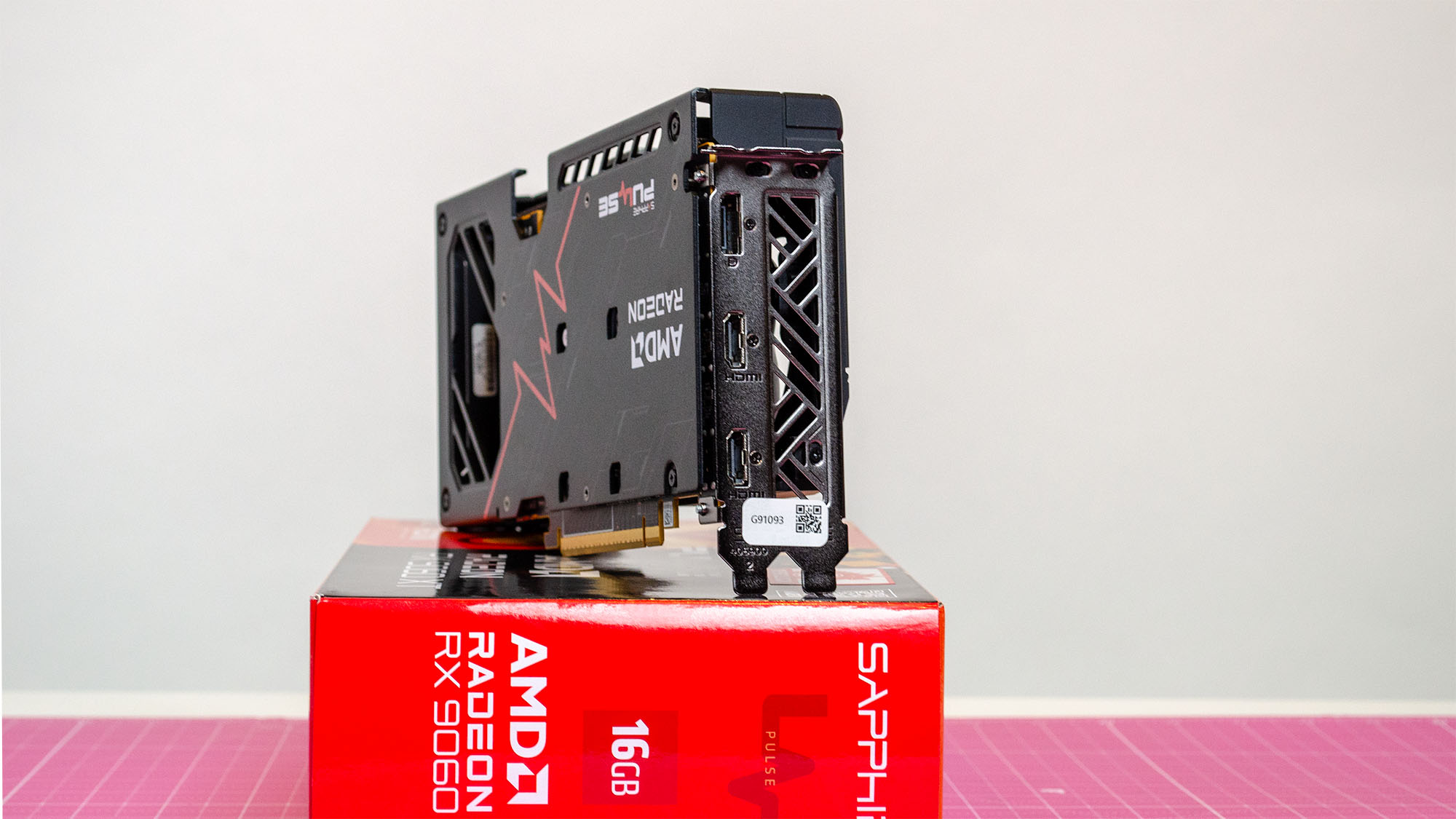
In the end, the RX 9060 XT cards kept things pretty close to their respective competition from Nvidia, though couldn't quite overtake them, even considering that I didn't factor Blender Benchmark's results into the final creative score for any of the cards tested, given that I wasn't able to run it on three of the cards in question.
Had those tests run successfully and been factored into the final scores, the two Nvidia cards would have pulled further ahead, most likely.
But would they have pulled far enough ahead to justify buying them? In the case of the RX 9060 XT 8GB, the RTX 5060 simply offers you a better value given that both can be purchased for MSRP right now, but if you don't want to give Nvidia your money, you're not really losing anything by going with the RX 9060 XT 8GB instead.
For the RX 9060 XT 16GB, though, it comes within just a few points of the RTX 5060 Ti at a much lower price, making it the one I'd recommend to anyone shopping for a GPU in this price range.
- Performance: 4.5 / 5
Should you buy the AMD Radeon RX 9060 XT?
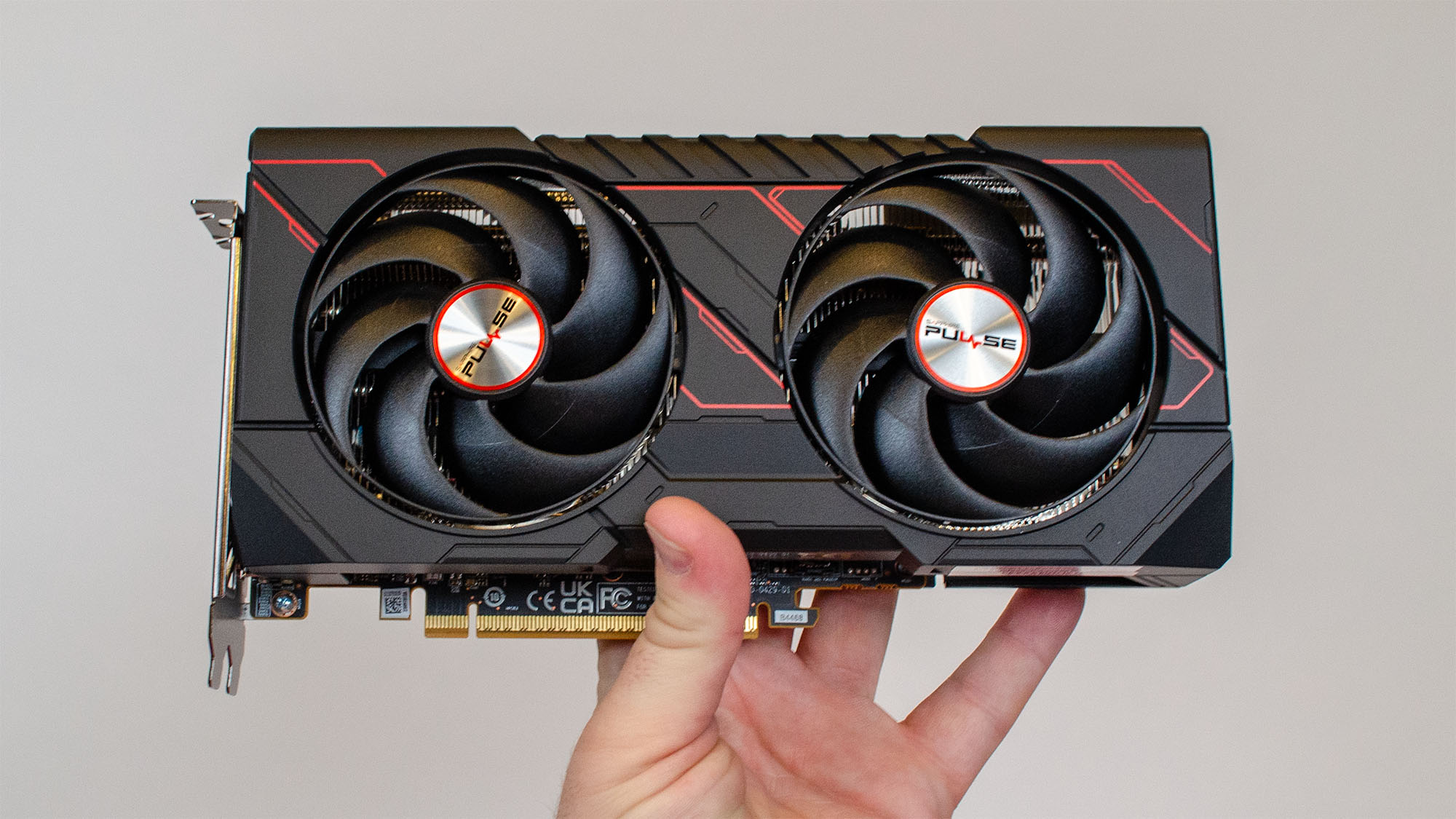
Category | Notes | Score |
|---|---|---|
Value | Both RX 9060 XT cards offer great value for their price. | 4.5 / 5 |
Specs & features | While the 16GB option for the RX 9060 XT is great, 8GB is just too little for a modern GPU. | 3.5 / 5 |
Design | Since there's no AMD reference card for either version of the RX 9060 XT, your design will vary depending on which card you get. The ones I tested were fine, but nothing spectacular. | 3.5 / 5 |
Performance | Both RX 9060 XT versions are capable cards with fantastic gen-on-gen performance, though Nvidia's competing offerings edge them out slightly. | 4.5 / 5 |
Final score | While both RX 9060 XT cards don't quite overtake Nvidia's competing cards, they offer a very compelling value for gamers, especially those who are getting tired of what Nvidia has been offering lately. | 4 / 5 |
Buy the AMD Radeon RX 9060 XT if...
You want excellent 1080p gaming
If you're still gaming at 1080p, these cards are fantastic.
You're making the move to 1440p gaming
If you just got a new 1440p gaming monitor and want to upgrade your GPU to handle the higher resolution, both of these cards are solid picks for 1440p.
You don't want to spend a fortune
While $300-350 isn't cheap, for graphics cards with this kind of performance, they're both excellent values.
Don't buy it if...
You want the best possible performance
While the RX 9060 XT cards performed very well, Nvidia's RTX 5060 Ti 16GB and RTX 5060 are still the better GPUs if you want the best performance.
You want to game at 4K
The RX 9060 XT 16GB can play some titles at 4K without ray tracing, largely thanks to upscaling, though it definitely struggles. The RX 9060 XT 8GB can only game at this resolution with some pretty heavy compromises.
You can afford to get the AMD RX 9070
If you have some room in your budget, moving up to the RX 9070 is definitely recommended if you want a more future-proofed gaming rig.
How I tested the AMD Radeon RX 9060 XT
- I spent about three weeks with the RX 9060 XT 16GB and 8GB versions
- I used my complete GPU testing suite to analyze the card's performance
- I tested the card in everyday, gaming, creative, and AI workload usage
Here are the specs on the system I used for testing:
Motherboard: Gigabyte X870E Aorus Elite WiFi 7 ICE
CPU: AMD Ryzen 9 9950X3D
CPU Cooler: Gigabyte Auros Waterforce II 360 ICE
RAM: G.SKILL Trident Z5 Neo DDR5-6600 (2 x 16GB)
SSD: Samsung 9100 Pro 4TB SSD
PSU: Thermaltake Toughpower PF3 1050W Platinum
Case: Praxis Wetbench
I spent about three weeks with both RX 9060 XT cards, using my standard suite of benchmark tests with industry standard tools like 3DMark, PassMark, PugetBench for Creators, and more.
For gaming, I use built-in benchmark tools in games like Black Myth: Wukong, Cyberpunk 2077, and F1 2024.
I also used both cards for about a week each as the GPU in my own PC at home where I used it for work, content creation, and gaming outside of formal testing.
- Originally reviewed June 2025

John (He/Him) is the Components Editor here at TechRadar and he is also a programmer, gamer, activist, and Brooklyn College alum currently living in Brooklyn, NY.
Named by the CTA as a CES 2020 Media Trailblazer for his science and technology reporting, John specializes in all areas of computer science, including industry news, hardware reviews, PC gaming, as well as general science writing and the social impact of the tech industry.
You can find him online on Bluesky @johnloeffler.bsky.social
You must confirm your public display name before commenting
Please logout and then login again, you will then be prompted to enter your display name.
